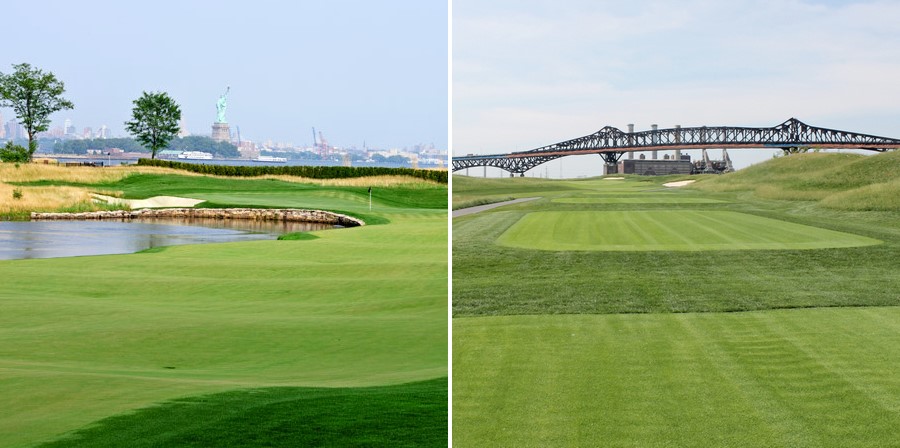
Estimated reading time: 7 minutes
JERSEY CITY, NJ. The start of the FedEx Cup Playoffs is underway with this year’s Northern Trust and the bulk of the visual attention will center on Liberty National Golf Club’s proximity to the New York City skyline with the iconic Statue of Liberty situated in easy eye-range to those playing in the event. The views from the course of the lower Manhattan skyline is nothing short of hypnotic.
What many do not realize is Liberty National is on the New Jersey side of the Hudson River. The club is situated in Jersey City, the second largest city in the Garden State and which is part of Hudson County — the smallest and most densely populated in NJ. How dense?
Hudson has over 13,000 people per square mile in just over 62 square miles with 672,000 people living within its border. Hudson is the 6th most densely populated county in the USA and to better understand the numbers — keep in mind New Jersey overall has the densest population in the USA with an average of 1,263 people per square mile. Hudson County is over 12 times that amount!
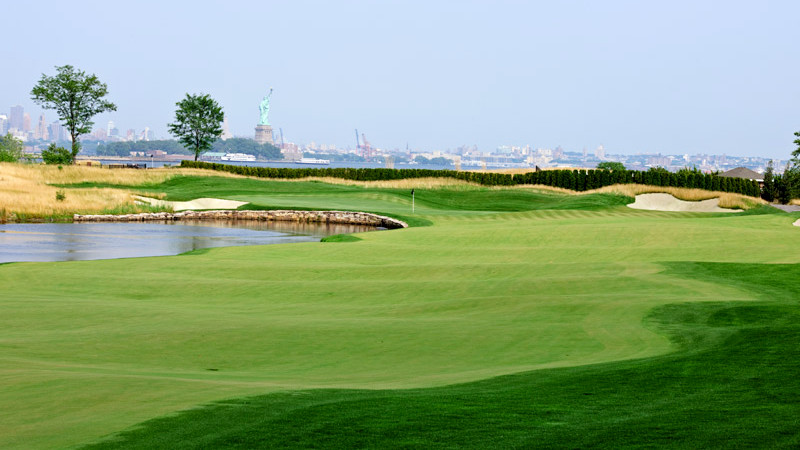
Liberty National is located in the far southeast corner of Jersey City and is shielded from close proximity to the Greenville neighborhood by the New Jersey Turnpike.
When Liberty National opened in 2006 it was an engineering marvel created from a site that included such usages as a Standard Oil Refinery, a World War II munitions storage facility as well as prisoner of war camp during the same period. In recent years the site had become an industrial site and for a time an oil refinery and a warehouse for industrial goods. While the views from the site were impressive — the likelihood of the location being turned into anything of serious note seemed farfetched.
Enter Paul Fireman.
The former Reebok Chairman and CEO sold his company to Adidas in 2005 — netting in the range of $700 million. As an avid golfer, Fireman had purchased other golf courses, however, the idea of turning the Jersey City location into a golf course of epic proportions beyond all others was a driving motivation — moving beyond a dream and going full bore to completion.
Work on creating the course started in 1992 and finished 14 years later. Total cost – $250 million. One of the most expensive courses ever built globally. Liberty National is located on 160-acres and is the design of Bob Cupp and former PGA TOUR player and Hall-of-Famer Tom Kite. The wherewithal to bring back to life such a wasteland showcases an engineering success in land capping, venting and rehabilitation. More than four million cubic yards of fill were used. When the words “before” and “after” are used for comparison purposes in golf architecture — expect to find Liberty National as a prime case study.
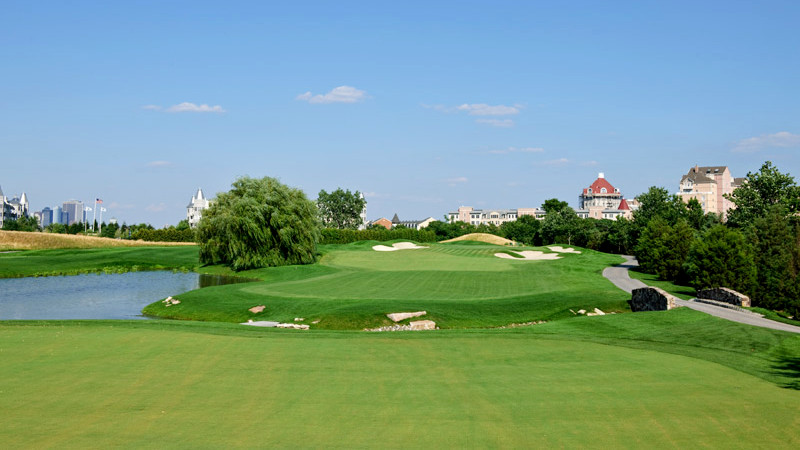
Needless to say, the premise of Liberty National was to attract the deepest of pockets. Being advantageously located just across the Hudson from those working on Wall Street made it an attractive playground for the most well-connected.
The facility is also screened from public views — save for the portion one barely sees-through tree plantings along a stretch of the Turnpike. In sum — Liberty National is a 21st century private club with all the key amenities. Despite the club’s desire for privacy there’s been outreach in hosting the First Tee of New Jersey — a program meant to get young boys and girls started in golf — as well as nearby high school golf teams which use the facility at different time intervals.
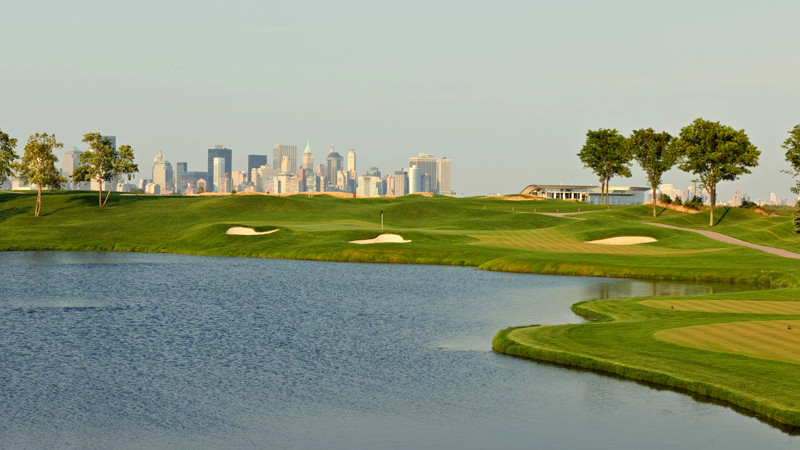
On the other side of Jersey City — roughly four miles away– located along a stretch of land adjacent to the Hackensack River sits Skyway Golf Course. The site, like the one at Liberty National, had its neglectful moments being a past landfill and a makeshift driving range. The desire to turn a lemon into lemonade was an ambitious undertaking by the governing body in Hudson County.
Opened July 1 2015, Skyway is the only regulation public course in Hudson County. And that tagline will likely forever remain in place. The 9-hole layout designed by architect Roy Case and Jeff Grossman is located on 60 acres of land and cost approximately $20 million to build. In the non-stop cacophony that abuts the property — those playing Skyway are treated to a meaningful oasis — one which whisks them away from the constant grind of urban daily life. Being in such a densely populated and frenetic area — the connection with meaningful open space via a golf connection is nothing less than therapeutic.
Skyway was not meant to be a tournament host in the manner of Liberty National. The target audience is those wanting to enjoy golf and doing so in an economical way. How much does it cost to play? The off-the-street rate for non-registered players opting to walk is $62 and on weekends/holidays the cost goes up to $72. Lower rates apply to certain age categories such as juniors and seniors. Hudson County residents can secure an annual registration and pay even less.
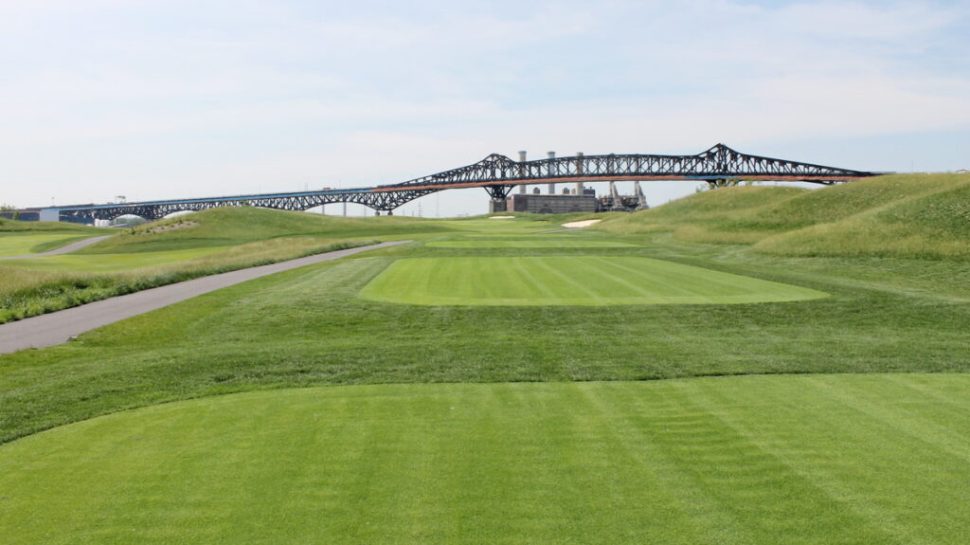
Skyway is named for the Pulaski Skyway — an elevated major roadway linking Jersey City and Newark. The bridge is easily seen from any of the holes. The views are not on the same level as the ones provided at Liberty National but the intangibles reach an even greater audience.
How popular has Skyway been? In 2019, roughly 40,000 rounds took place. In 2020, the numbers jumped to 43,000 courtesy of the pandemic which spiked golf rounds nationwide. The projection for 2021 is on pace for over 41,000.
Skyway is just over 3,200 yards from the rear tees and provides for three par-5s, three par-4s and three par-3 holes. The golf was not meant to be of similar nature as more renowned municipally-owned courses which have hosted major championships such as Bethpage State Park’s Black Course on Long Island or the South Course at Torrey Pines in San Diego. But the design is anything but pedestrian and the turf quality is kept well — albeit not at the tweezer-cutting height seen at Liberty National.
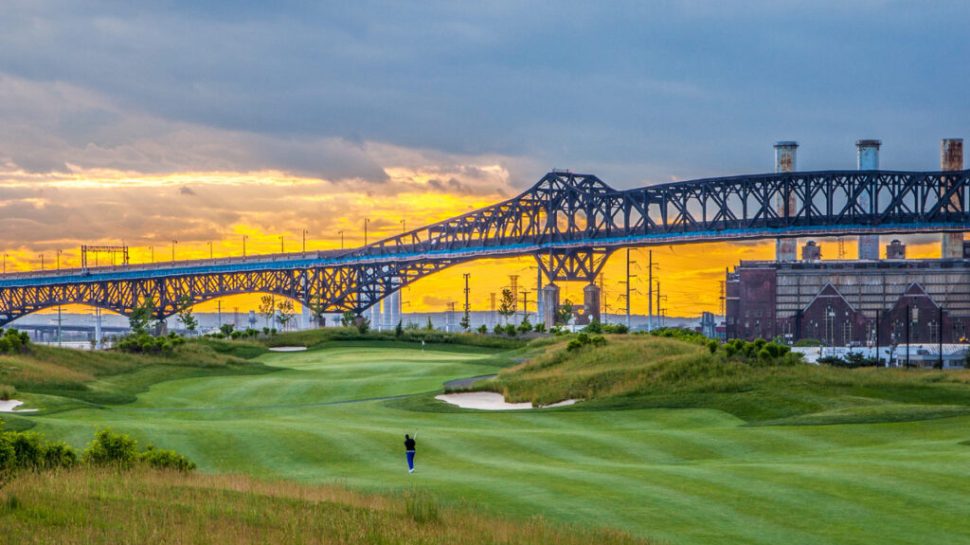
For those who have lived their lives in urban areas where grass is generally seen by accident and not automatically, Skyway is a porthole to a sport from which a lifetime of pleasure can emanate. Planting future seeds for golf to grow is what lies at the heart of Skway and is a critical pathway for what will keep golf relevant in the 21st century.
The differences between Liberty National and Skyway are truly apparent for anyone with eyes to see. But the intersection they share is a fascinating bond with golf at its center point. Yes, the audiences for each will be different but the love of the game remains at its core.
Same sport — same county — different missions — one shared love.
Golf.
Liberty National images courtesy of Liberty National GC
Skyway GC images courtesy of Skyway Golf Course
